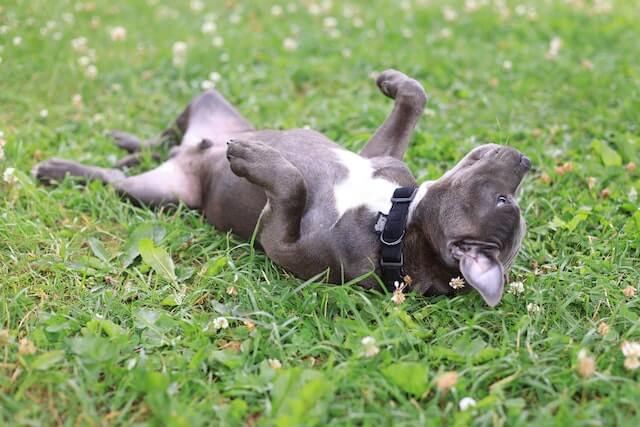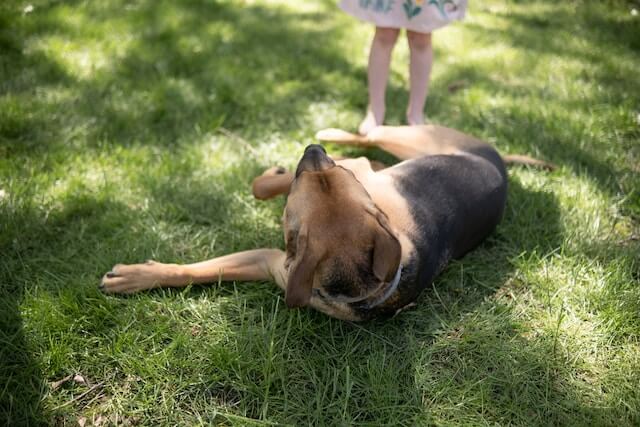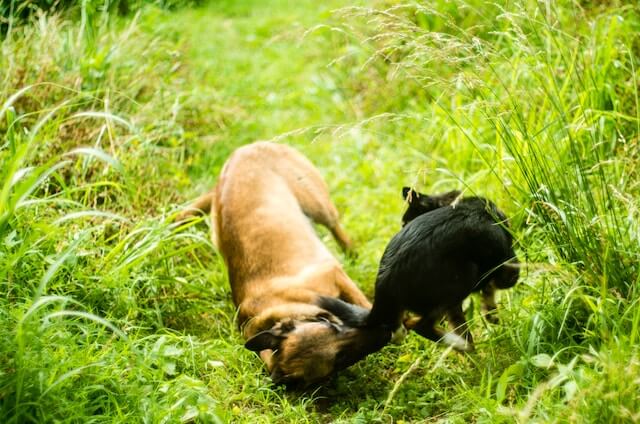Dogs have a variety of curious behaviors that can be puzzling for people to understand. One of the most bafflings is the tendency for dogs to roll in dead animals when they come across them. It can be an unpleasant surprise for owners and can lead to skin infections, unpleasant odors, and even poisoning in some cases. Therefore, it’s essential to get to the root of why do dogs roll on dead animals and how to prevent it. In this article, we will explore the different theories behind this behavior and provide tips for preventing it.
Theories about Why Do Dogs Roll in Dead Animals
For years, owners and experts alike have been mystified by a peculiar behavior: rolling in anything that is dead, especially small game like rabbits or squirrels. Despite many considering this behavior as disgusting or repulsive, it seems to be a natural inclination of our furry friends. Animal behaviorists and researchers worldwide have attempted to identify the motivations behind it, but there’s still no clear consensus. Nevertheless, learning more about it can help us deepen our understanding of our dogs’ instincts and provide them with better care. By exploring different theories and scientific evidence, we can ensure that we keep our four-legged companions healthy and happy.
To Mask Their Own Scent
Research suggests that dogs may roll in dead animals for instinctual reasons tied to their heritage as predators. This behavior may have allowed wild dogs to remain hidden from larger predators that might pose a threat to them. By rolling in the scent of their prey, they may have been able to camouflage themselves and avoid detection by other animals. Additionally, the potent odor of the dead animal might have helped cover their own scent and made it easier for them to sneak up on other prey.
While it is challenging to validate this theory, as domestic dogs no longer hunt in packs and have access to food, researchers believe that the idea of masking one’s scent is a persuasive theory. It is reasonable to assume that dogs have evolved to use this behavior as an effective way to camouflage their scent, especially when food is scarce.
Showing off to Other Dogs
Another theory is that dogs do it to communicate with other dogs. This is a relatively recent theory, but it is based on the idea that dogs are social animals and communicate with other dogs in various ways. Wolves, which are the ancestors of dogs, are social animals that communicate with each other through body language and scent marking. Some experts suggest that rolling in dead animals could be a way for dogs to communicate their recent kill or find with other dogs in their territory.
Moreover, research has shown that dogs use their sense of smell to communicate with each other. For example, dogs often sniff each other’s butts to gather information about one another. It is possible that by rolling, dogs are trying to acquire and spread the scent of the dead animal throughout their territory, letting other dogs know that they have been there.
While this theory might seem plausible, it is also challenging to verify. Dogs’ social behavior is complex and often unpredictable, and it can be challenging to determine their motivations. However, many experts believe that the idea is a compelling possibility that should not be discounted.

Leaving Their Own Scent
A third theory is that it is a way for them to leave their own scent. In the wild, dogs may have rolled in the scent of dead animals to signal their territoriality to other animals in the area, warning them to stay away. They have a highly developed sense of smell, and experts suggest that it can be a way for them to claim ownership of the carcass. By leaving their own scent, dogs may be communicating to other animals that they have claimed the dead animal as their own and should not be approached or challenged. Moreover, it can also serve as a way for dogs to communicate with other members of their pack. By spreading their own scent, dogs may be signaling their location and the location of the food source to other members of their pack, which can be important for their survival.
Enjoyment the Smell
It’s no secret that dogs have very different sensory perceptions than humans and are very sensitive to smells. What we may find repulsive, they may find interesting or pleasant. Some owners find that their dogs will seek out other smelly things to roll in, such as garbage or animal feces. It’s possible that they don’t realize that the smell is unpleasant or that it draws negative attention from their owners. Dogs may find the dead animal smell intriguing, as it may activate their natural hunting instincts. Moreover, they may derive pleasure from the scent, much like how humans enjoy the aroma of their favorite food. By exploring the different theories behind this behavior, we can deepen our understanding of dogs and continue to uncover the many mysteries of their instinctual behaviors.
Preventing Dogs from Rolling in Dead Animals
If you’re a dog owner dealing with the concerning issue of your dog rolling in dead animals, there are several steps you can take to address or prevent this behavior.
- Training: Positive reinforcement training can be effective, rewarding the dog for responding to commands such as “leave it” or “come.” Leash training can also help owners control their dogs when going on walks, reducing the chances of the dog coming across a dead animal;
- Yard Management: Owners can also take steps to prevent dead animals from ending up in their yards, to begin with. This can include installing fencing to keep wild animals out, keeping an eye out for poisonous plants that may attract animals that could harm dogs, and checking for hazards before letting the dog outside;
- Bathing and Grooming: If your dog does end up rolling in a dead animal, it’s important to act quickly before the smell sets in. Bathing your dog with shampoo can help remove the odor, as can a mixture of water and baking soda or a few drops of dish soap. Natural oils, such as tea tree oil, can also be effective at removing odors. Be sure to follow the manufacturer’s instructions for any bath products you use and avoid anything that could irritate your dog’s skin or eyes.

Conclusion
Understanding the theories behind why do dogs roll on dead animals can help owners manage this behavior better. If you are unsure how to manage this behavior or need additional advice, consult with a veterinarian or an exotic vet if necessary, especially if you live in Texas or areas known for potentially dangerous wildlife. Managing this behavior in dogs can be done through various methods. One suggestion is to introduce a strong verbal command to interrupt the behavior and redirect the dog’s attention elsewhere. Strengthening the human-dog bond through obedience training and playtime can also help mitigate unwanted behaviors. By being vigilant and taking proactive steps to manage this behavior, owners can help their dogs thrive while keeping themselves and their families safe.
References
- https://www.ncbi.nlm.nih.gov/pmc/articles/PMC8388720/
- https://www.ncbi.nlm.nih.gov/pmc/articles/PMC9219509/
- https://www.ncbi.nlm.nih.gov/pmc/articles/PMC6969016/
- https://true-dog.com/behavior/why-do-dogs-sniff-butts/
- https://www.cambridge.org/core/books/abs/animal-communication-networks/scent-marking-and-social-communication/AA05C264AC4C060F9E7F32AD130E83E8
